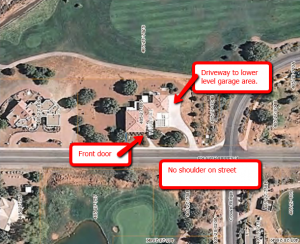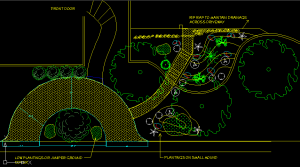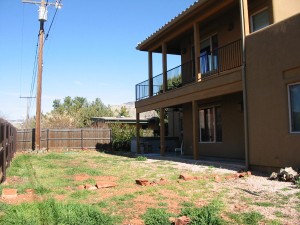Sedona Second Home Landscaping Tips for Prospective Owners
You’re shopping for a second home in Sedona and will use it part of the year or perhaps move into it full time when you retire. Since you will not be there full time, how much effort should you put into your Sedona second home landscaping? The answer depends on the current state of the landscaping and whether you intend to live in it part time or rent it out.
For instance, the home may be a foreclosure or bank owned with neglected landscaping. Or it may be fully landscaped in good shape and you will need to continue the maintenance. It may have been a rental with minimal landscape improvements.
Regardless of the type of property it was, you need to assess the current state of the landscaping. It could be anywhere from a landscape that was disregarded (yes, even in Sedona), to a high end outdoor living environment where the owners valued professional landscaping and invested in a custom design and installation.
The current state of second home landscaping falls into three general categories:
1) The Clean Slate (needs a complete landscape)
These types of properties are homes that may have never been landscaped except for a few trees and shrubs and gravel cover. They are homes where the owners did not value upgrading the landscaping by installing improvements such as a patio, nice fencing, or other elements. There may be a lot of native vegetation left in its natural state.
To some degree, these properties are like a clean slate because there isn’t much that you need to rip out and redo the way you want it or to correct mistakes in terms of taste or poor quality work. These properties include foreclosures, rentals and older properties.
2) The Remodel (needs repairs and a makeover)
Your new home may be equipped with a concrete driveway, block walls, brick patios, a barbeque island and would appear that it was installed as a complete landscape project at one point. It may have been installed by professional landscapers, or some of the improvements could have been homeowner built.
When a landscape needs a makeover or renovation, it’s often because it doesn’t work for the new owner. It may need repairs, it may lack certain elements, it may not have enough patio space, the front may lack any curb appeal, the barbeque island was placed in an unacceptable location and so forth.
3) The Acceptable Landscape (fully landscaped)
The home may have been fully landscaped with an irrigation system, drain lines, a lawn, a fountain, decking, nice trees and shrubs and was maintained either by the owner or a maintenance service. This type of landscape requires minimal improvements except for areas where you would like to customize or add something it lacks. While being an absentee owner, you will need to make sure it is maintained.
Now ask yourself these questions:
Will it be vacant while you are not using it?
If it is an Acceptable Landscape, you may not need to do much at all except engage the services of a maintenance service so it looks good when you do visit.
If it’s a Remodel, you may be compelled to make a lot of improvements so that when you are visiting, it will accommodate your needs and wants and allow you to enjoy the outside without being reminded of all the fixing and replacing it needs.
If it’s a Clean Slate, how enjoyable will your second home be if there is not much to the landscaping? You will certainly want to make some improvements and here is where you can start from scratch and design the whole yard the way you want.
Will you rent it out so its not a financial burden?
If you will not be visiting your Sedona second home on a regular basis as in the case of the vacant property, you will most likely view it as an investment property with the intention of either changing it from being a rental to an actual second home or moving in when you can retire and relocate to Sedona.
The decision regarding how much you should landscape the property will often be made soon after you purchase the property and the current state of the landscape will affect your ability to market the rental for the going market rent for the price range of the home. For instance, a high end Sedona property that rents for at least $2000/month will need to have decent and well maintained landscaping. A property that is either a Clean Slate or a Remodel will need its landscaping to be acceptable and comparable to the rental amount.
Being a rental, most landlords are not inclined to make improvements that do not make a return on the investment, so they tend to keep everything as is. They will wait until they move in themselves to make significant changes to the landscape.
If you are currently looking for property for a second home or investment, consider hiring a landscape professional who can give you a Sedona second home landscaping assessment of the improvements required to bring the landscaping up to the standards you require depending on how you are going to use the home.










